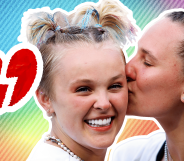What does polyamory mean, is it an LGBTQ+ identity and how does it differ from polysexuality?
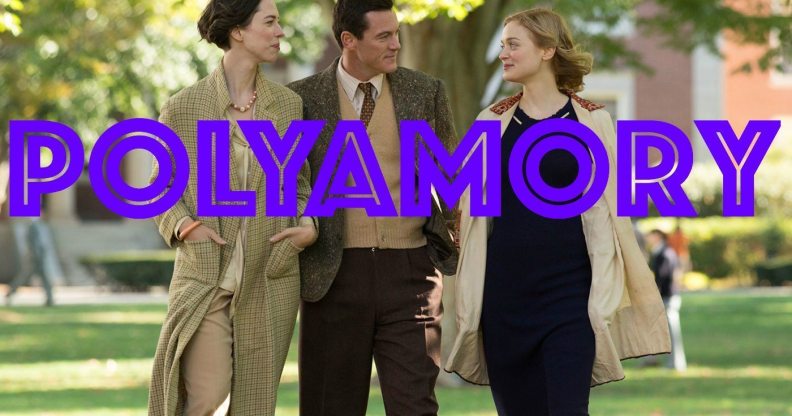
Polyamory is explored in 2017 movie Professor Marston and the Wonder Women (Annapurna Pictures)
Polyamory is explored in 2017 movie Professor Marston and the Wonder Women (Annapurna Pictures)
Polyamory is often in the news, with salacious articles about “sex-crazed throuples” thrown around on a regular basis by the mainstream media, when in fact the reality of polyamory is much more sedate.
What’s behind this fascination? And why do people assume polyamory is an LGBTQ+ identity, rather than a type of relationship?
The myths and confusion around polyamory might be due to the fact that the majority of people tend to form pairs, and spend their lives together – or at least portions of their lives together – as couples.
Why? Because… erm… we don’t know. Monogamy as a concept is veiled in mystery. Some anthropologists believe that monogamy started millions of years ago, while others suggest it may have started more recently. We could go down a whole rabbit hole about that, but instead, let’s circle back to polyamory.
What we do know is that although monogamy clearly has a long history, some people aren’t into the twosome thing. Some people are polyamorous, and form romantic relationships with more than one person at a time.
A very brief history of polyamory

The term comes from the Greek word ‘poly’, which means “many, several”, and the Latin word ‘amor’, which means “love”.
Polyamory is not an LGBTQ+ identity. However, LGBTQ+ communities do have a long history of polyamory – one dating all the way back to Lord Byron and the Shelleys, continuing through to Harvey Milk and the Radical Faeries. A 2006 study showed that 28 percent of lesbians, a third of bisexuals, and almost two thirds of gay men are open to non-monogamous relationships.
The first usage of the word polyamory is credited to pagan priestess Morning Glory Ravenheart Zell in 1990. It first appeared as “poly-amorous” in her article ‘A Bouquet of Lovers’, published in Green Egg Magazine.
The words polyamory, polyamorous, and polyamorist were added to the Oxford English Dictionary in 2006.
Polyamory: ethical non-monogamy
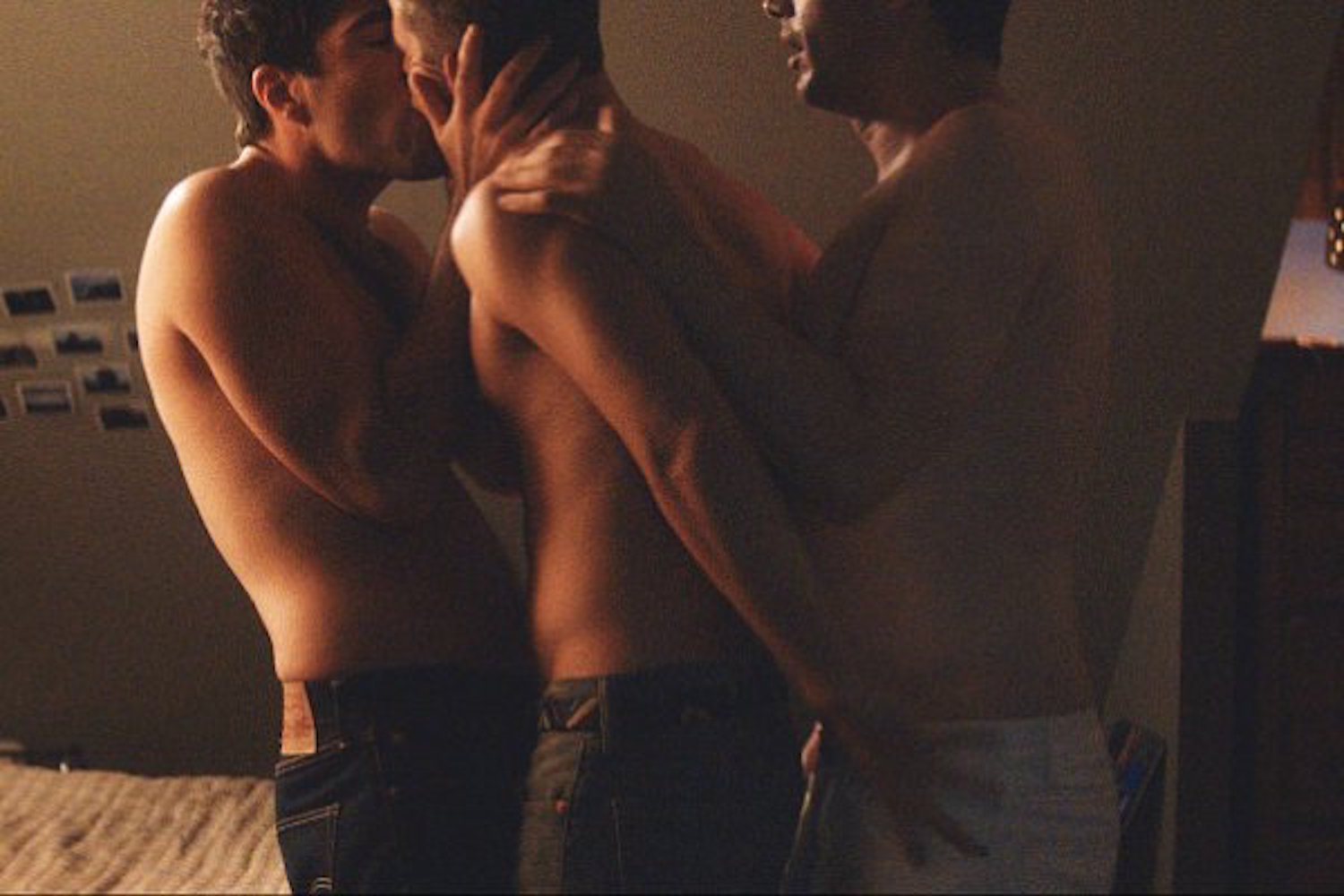
Polyamory is described as ethical, consensual non-monogamy. All parties – whether three, four, five, or eighteen of them – are open and honest, and reject the view that sexual and/or loving relationships are exclusively between two people.
Polyamorous arrangements are – of course – varied, and depend on the people involved, and their interpretations of ethics. One misconception is that polyamorous people can’t cheat on their partners as their relationship is “open”, but that is not the case. Many polyamorous relationships have firm rules around how to approach bringing another person into the group – usually called a “polycule” – and clear communication, openness, trust, discussion and honesty are all cornerstones of polyamory.
The book The Ethical Slut is often described as a ‘bible’ for people interested in non-monogamy, and details how to approach challenges such as jealousy and insecurity.
Polyamorous flags and symbols
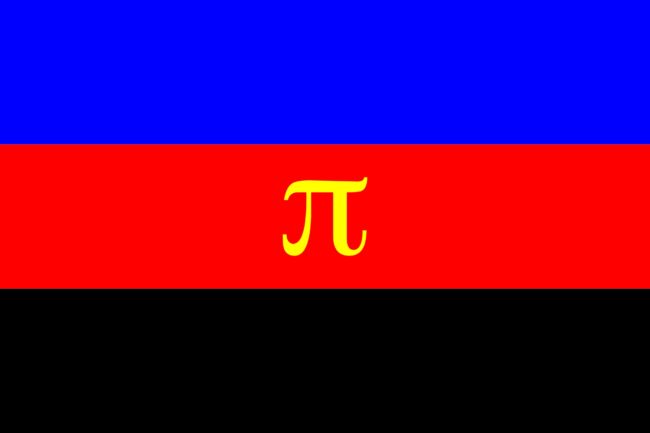
Designed by Jim Evans, the Polyamory Pride Flag is made up of blue stripes (to represent openness and honesty among all partners), red (for love and passion), and black (signifying solidarity with those who are forced to hide their polyamorous relationships).
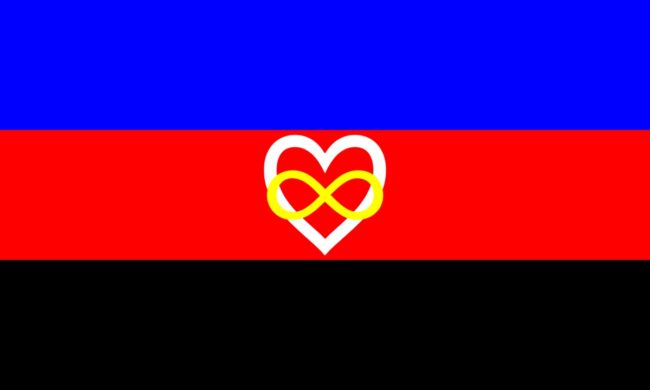
In some flags, polyamory symbols feature – either the gold Greek ‘pi’ symbol, or the infinity sign within a heart. Another polyamory symbol is a multicoloured parrot because parrots are often called ‘Polly’, and that sounds a lot like ‘poly’.
Polyamory in the media
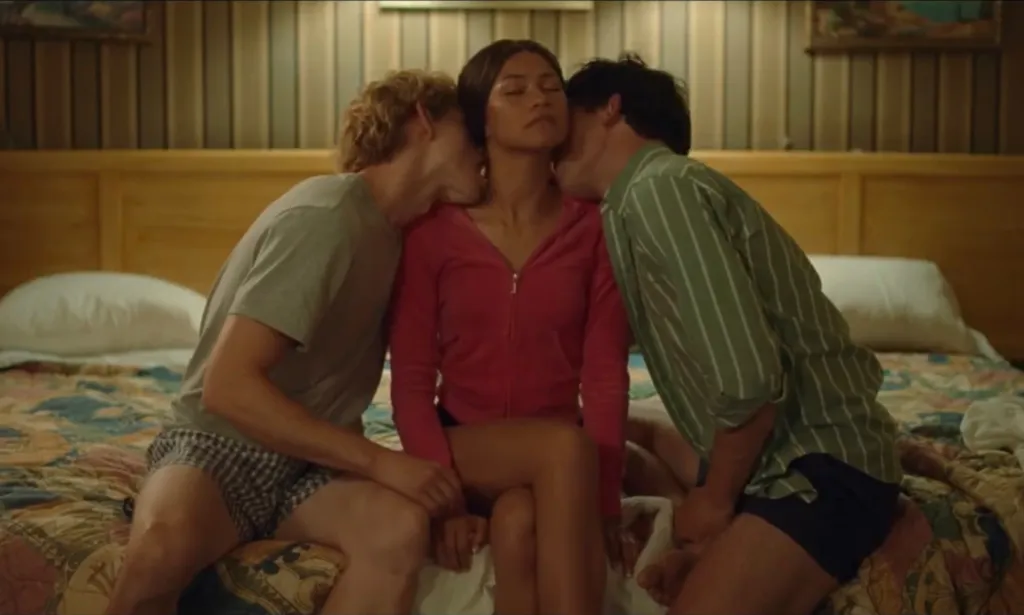
It’s important to separate threesomes from polyamory, they are not the same thing. Yes, threesomes can be a form of polyamory, but not all polyamorous relationships involve threesomes.
However, it’s worth pointing out that the ménage à trois as a trope has been featured in various films, including Oliver Stone’s Savages (2012), François Truffaut’s Jules et Jim (1962), Philip Kaufman’s Henry & June (1990), Woody Allen’s Vicky Cristina Barcelona (2008), Bernardo Bertolucci’s The Dreamers (2003), and Andrew Fleming’s Threesome (1994), as well as 2024’s Challengers, pictured above.
Polyamory is also depicted in Professor Marston and the Wonder Women – a 2017 American biopic about American psychologist William Moulton Marston, who created the fictional character Wonder Woman.
It stars Luke Evans as Marston, Rebecca Hall as his legal wife Elizabeth and Bella Heathcote as the Marstons’ lover and live-in mistress, Olive Byrne.
The film’s director and writer, Angela Robinson, told The Guardian of their relationship: “Poly relationships or ‘kink’ on film have usually been portrayed as salacious or transgressive in a negative way and I didn’t want to do that.
“Narratively, I wanted to make a really accessible story that told the story of three people falling in love. I would rotate the point-of-view of the film through each of their viewpoints. I wanted the audience to root for them to be together,” she added.
Though there are very few known polyamorous celebrities, Alexa Chung previously revealed that she’s open to polyamory and same-sex relationships, while actor Nico Tortorella opened up about growing up queer and navigating polyamory.
What’s the difference between polyamory and polysexuality?
Polysexuality, unlike polyamory, is an LGBTQ+ identity.
Somebody who’s polysexual is sexually attracted to people of multiple genders – and yes, before you say “hang on, isn’t that the same as…” yes, polysexuality overlaps with omnisexuality, bisexuality, and pansexuality.
In fact, some people consider polysexuality to be an umbrella term that encompasses other queer identities
Can three people get married?

Not in the UK or US, however, some places in the world do recognise polyamorous relationships. In Colombia, for example, John Alejandro Rodriguez, Victor Hugo Prada, and Manuel Jose Bermudez – pictured above – became the first polyamorous family to have a legally recognised relationship in 2017.
However, in a PinkNews exclusive, Green Party leader Natalie Bennett said her party is “open” to discussion on the idea of civil partnership or marriages between three people.
In 2005, speaking in a question and answer session with PinkNews readers, Bennett was asked whether she supported the right of polyamorous relationships to get married or have civil partnerships.
Meanwhile, a study by the US-based organisation Loving More in 2012 found that 65.9% of more than 4,000 polyamorous people said would want to marry multiple people if such marriages were legal.
It remains to be seen if more than two people will be able to get married in the future.
We’ll keep you posted.
